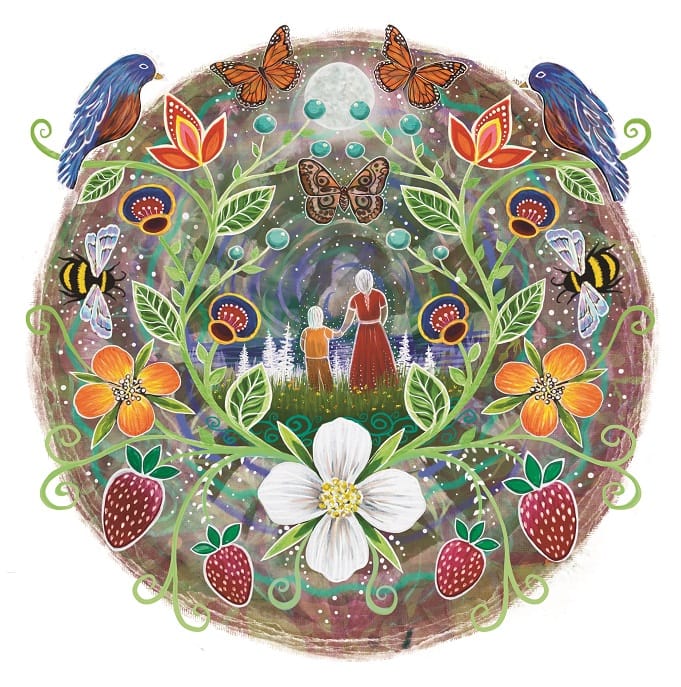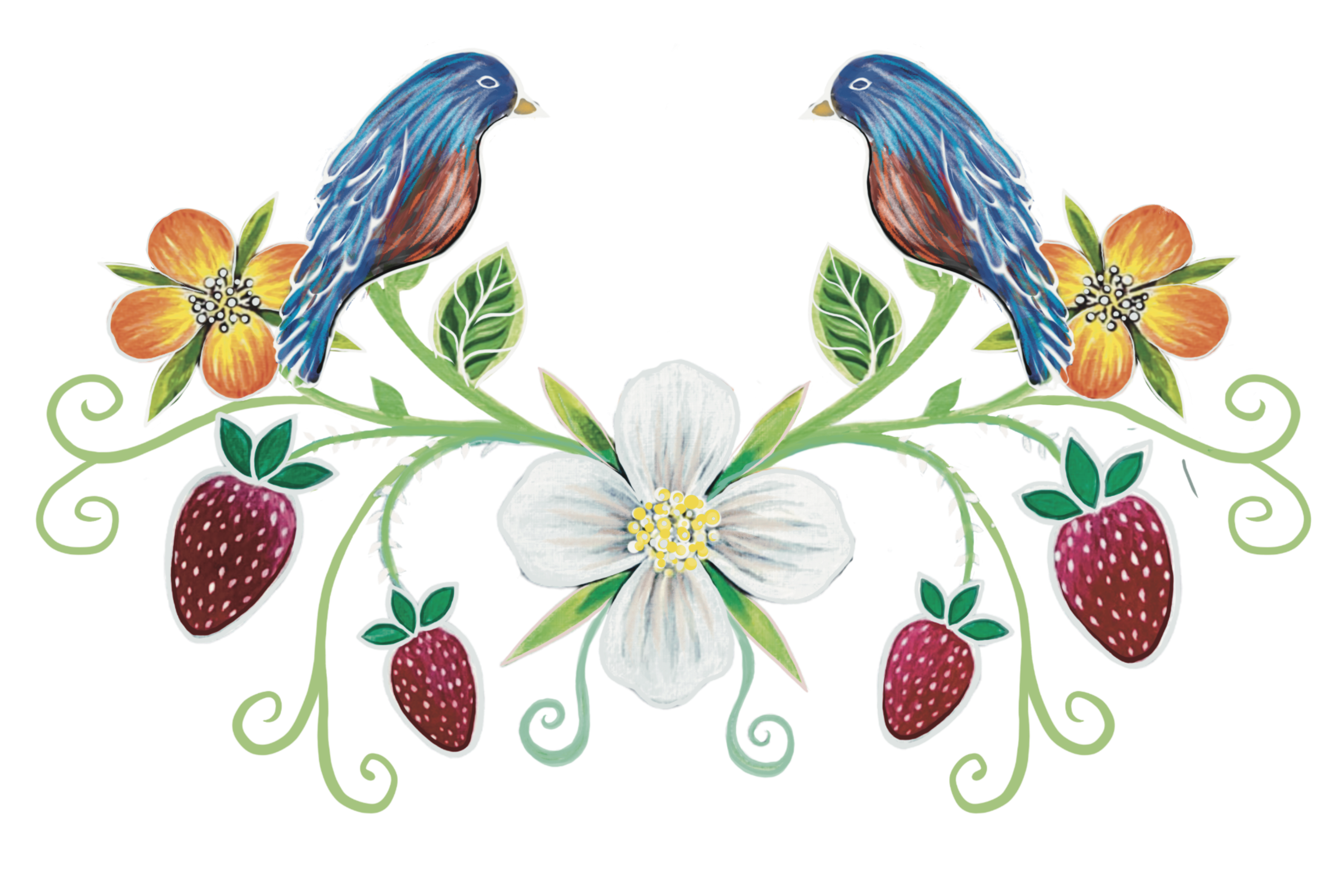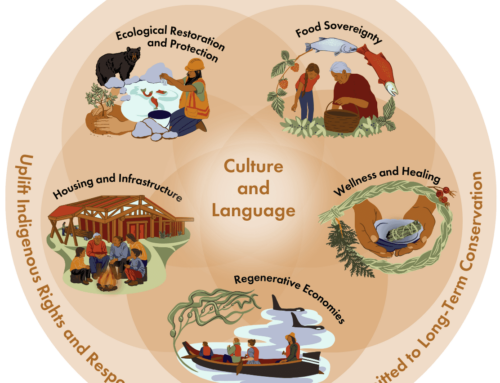Balancing the Narrative: Communications Guidelines for Indigenous-led Conservation

Illustrations by Kisa MacIsaac
Prepared by: The Communications Learning Circle of the Conservation through Reconciliation Partnership
This work is licensed under a Creative Commons Attribution-NonCommercial-ShareAlike 4.0 International License
Publication Date: December 2023
Acknowledgements
These guidelines are the result of a collaborative effort rooted in the principles of relationships, respect, responsibility, and reciprocity and a commitment to support Indigenous-led conservation. They were developed through the collective vision and efforts of the Conservation through Reconciliation Partnership’s Communications Learning Circle.
The Communications Learning Circle was a virtual peer-support and learning community. It was established to address the “Third Moose in the room” as identified by the Indigenous Circle of Experts (ICE). The ‘Third Moose’ refers to capacity development for Indigenous-led conservation initiatives, including IPCAs.
This document extends the communications guidelines for engaging with Indigenous Partnersd eveloped by Nature United, which have evolved over several years of collaborative experience. We are appreciative of Nature United for laying the groundwork that allowed us to build upon. Furthermore, we wish to acknowledge Pamela Vernaus, the Senior Communications Manager at Nature United, for co-chairing the learning circle and for her instrumental contributions in facilitating the design and layout of this document.
We would like to thank our partners for sharing internal and external resources to inform these guidelines in the spirit of reciprocity and reconciliation.
We extend our deepest gratitude to Emilee Gilpin, Senior Communications Advisor and Community Storyteller for Coastal First Nations, Great Bear Initiative, who has shared her expertise and knowledge in carefully reviewing this work.
We are grateful to Kisa MacIsaac, Métis artist, educator, and facilitator, for crafting the beautiful illustrations that are carefully displayed throughout this work.
Introduction
For millennia, Indigenous Peoples governed and cared for the lands and waters in what has very briefly been known as Canada. First Nations, Inuit, and Métis communities continue to cultivate diverse and abundant cultures, economies, and livelihoods that are in balance with natural law.
Indigenous-led conservation and stewardship is a new way of describing a range of practices, knowledge, skills, and laws Indigenous Peoples have developed, refined, and shared across generations to care for and govern their territories.
In the past decade, there has been a recent shift within Canadian environmental non-governmental organizations (ENGOS), Crown governments, and other partners in recognizing, supporting, and investing in Indigenous-led conservation, including Indigenous Protected and Conserved Areas (IPCAs).
Indigenous-led conservation is gaining national attention. Many governmental and non-governmental environmental organizations and agencies are making reconciliation and relationship-building with Indigenous leadership a central part of their mandates. And these mandates are directly supported through organizational communications strategies and practices.
These guidelines offer anti-oppressive practices, considerations, and approaches for communicating with and about Indigenous conservation leadership within the Canadian context. This document acts as a framework through which to co-develop communications strategies, approaches, and content with First Nations, Inuit, and Métis partners in respectful, reciprocal, and responsible ways.
These guidelines attempt to shed light on the enduring impacts of colonialism. They also aim to encourage relationship-building based on reconciliation, trust, respect, equity, open dialogue, integrity, and mutual accountability. The primary audiences for these guidelines are communications departments, teams, and professionals within environmental non-governmental organizations (ENGOs); federal, provincial, and territorial conservation agencies and organizations; consultancies; and other partners supporting and communicating about Indigenousled conservation.
This document can also offer value to Indigenous-led organizations and governments as they co-create communications strategies with partners. It can support Indigenous governments and organizations as they reinforce the principles of respect, responsibility, and reciprocity to ensure authentic, meaningful communications.
We encourage you to download, read, reflect, and share these guidelines widely.
Download Balancing the Narrative: Communications Guidelines for Indigenous-led Conservation.




